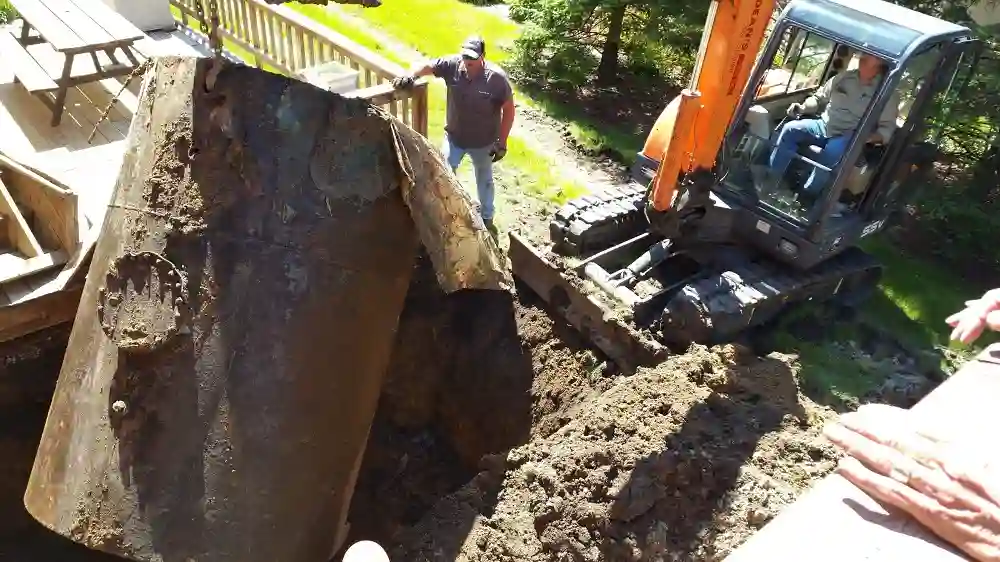An oil tank, once a staple for home heating, can transform from a convenience to a concern as it ages. “Oil Tank Exodus: Navigating the Removal Process for Homeowners” is a comprehensive guide designed to assist homeowners in successfully managing the removal of aging oil tanks from their properties. This guide outlines the steps, considerations, and strategic approaches necessary for a smooth and responsible oil tank removal process.
Recognizing the Need for an Exodus: Signs of Aging Tanks
The journey of oil tank removal begins with recognizing the signs of aging tanks. Rust, corrosion, and visible leaks are indicators that the tank may be nearing the end of its useful life. By acknowledging these signs, homeowners can initiate the process of planning a strategic oil tank exodus to ensure a seamless transition.
Environmental Preparedness: Assessing and Minimizing Impact
A crucial step in the removal process is environmental preparedness. Homeowners must assess the potential impact on the surrounding environment, including soil and groundwater. This involves understanding and minimizing the risks associated with oil leaks and spills to ensure a responsible and eco-friendly oil tank exodus.
Navigating the Regulatory Landscape: Securing Permits for Compliance
Homeowners must navigate the regulatory landscape to ensure a compliant oil tank exodus. Securing the necessary permits and adhering to local regulations is crucial. This not only ensures legal compliance but also contributes to a smoother removal process by avoiding potential delays and penalties associated with non-compliance.
Professional Guidance: Collaborating with Removal Experts
The successful navigation of an oil tank exodus often involves seeking professional guidance. Removal experts bring valuable insights into the tank’s condition, potential risks, and the most suitable removal methods. Collaboration with professionals ensures that homeowners make informed decisions, ensuring a safe and compliant oil tank exodus.
Risk Assessment: Identifying and Addressing Potential Hazards
Conducting a comprehensive risk assessment is a fundamental aspect of planning an oil tank exodus. Identifying potential hazards, whether structural or environmental, allows homeowners to implement targeted mitigation strategies. This proactive approach minimizes the likelihood of accidents and ensures a safe and successful oil tank removal operation.
Choosing the Right Removal Method: Tailoring to Property Dynamics
Selecting the appropriate removal method is a critical decision in planning an oil tank exodus. Factors such as the tank’s condition, location, and potential environmental impact guide this choice. Tailoring the removal method to property dynamics ensures an efficient and safe operation, minimizing disruption and mitigating potential risks.
Strategic Site Excavation: Precision in Revealing and Extracting the Tank
Site excavation becomes a strategic maneuver in the oil tank exodus. Skilled operators, equipped with specialized tools, must execute precise digging techniques to uncover and extract the tank without causing damage or environmental disruption. Precision in site excavation is essential for the success of the removal process.
Pumping Protocols: Safely Extracting the Tank’s Contents
Strategic pumping protocols are essential for safely extracting the tank’s contents during an oil tank exodus. Advanced pumping technologies minimize the risk of spills, ensuring a clean and controlled extraction process. Following environmental regulations guarantees the responsible handling and disposal of extracted oil, aligning with the strategic goal of a safe and efficient removal.
Tactical Lifting and Transport: Ensuring a Secure Transition Above Ground
Tactical lifting and transport are pivotal elements in the oil tank exodus. Precision and specialized equipment ensure a secure extraction without causing damage. Skilled operators contribute to a safe removal process, minimizing risks associated with lifting and transporting the tank from below ground to above ground, ensuring a secure transition.
Post-Removal Verification: Confirming Success and Environmental Safety
After a successful oil tank exodus, post-removal verification is crucial for confirming success and environmental safety. Environmental testing and soil analysis provide assurance that the removal process has been safe and effective, leaving the property free from contamination. Confirming success ensures homeowners can move forward confidently, knowing that their oil tank exodus has been executed with precision.
Conclusion:
“Oil Tank Exodus: Navigating the Removal Process for Homeowners” provides a comprehensive roadmap for homeowners facing the challenge of removing aging oil tanks. From recognizing signs of aging tanks and understanding environmental impact to navigating regulations, seeking professional guidance, and implementing precise removal methods, this guide ensures a smooth and responsible oil tank exodus. Risk assessments, strategic excavation, pumping protocols, tactical lifting, and post-removal verification contribute to the safety and success of the oil tank removal process, allowing homeowners to embark on a new era with confidence and environmental responsibility.
